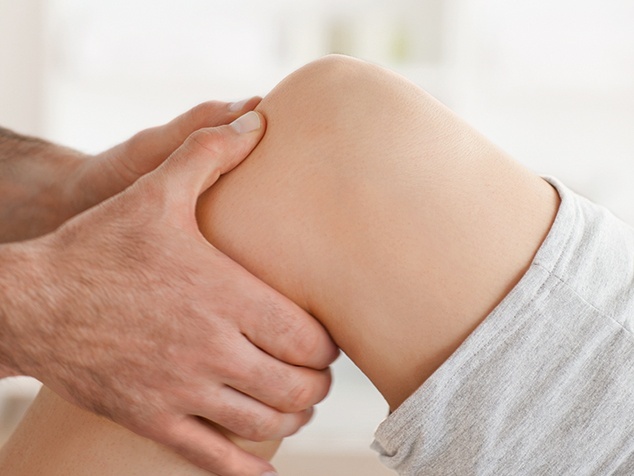Torn cruciate ligament: Decision against surgery
Torn ACL: Treatment methods with and without surgery (3/3)
(Patient of Dr. med. Andreas Krüger in interview with Rosanna Di Bello @blog.hirslanden.ch)
"Torn ACL: I was treated conservatively without surgery"
Patient (56 years old) fell while skiing and injured her knee. Diagnosis: Injury of the anterior cruciate ligament. From the beginning it was clear to her that surgical treatment was out of the question for her, provided there was an alternative, because every operation is associated with a certain risk. What happened in the accident, how she was treated and how she feels today, you will learn in the following interview.
What does freedom of movement mean to you?
Patient: Freedom of movement is essential for me. Exercise and sports are part of my physical and mental well-being.
How much exercise do you do?
Patient: I do sports every week and I also like to do it in nature.
You were in a skiing accident, what happened?
Patient: During the downhill run in the afternoon, we always have a race within the family, with the winner usually being decided between my husband and our sons. We also did this on the day of the accident in the Grindelwald ski region. At first I tried to keep up and not lose the connection. But when there were a lot of people on the piste in narrow passages and I had to avoid a ski school class, I braked and drove to the edge of the piste. An edge fault, the higher snow and the greatly reduced speed caused me to crash. A burning pain on the inside of my right knee made me immediately fear that something must have torn.
Were you transported directly to the emergency?
Patient: No, a skier helped me up on my legs and I drove slowly to the valley station. My right leg was alarmingly unstable. I arrived at the bottom with a lot of concentration and caution. We then immediately sought medical help for first aid.
What treatment did the doctors give you?
Patient: The doctor in Grindelwald prescribed a soft protective splint and recommended cooling and elevation. I then went to Zurich myself for further treatment, which took place a week later in Dr. Krüger's practice. Dr. Krüger examined me and then showed me the MRI image of my cruciate ligament injury on the iPad. Seeing this image in front of me somehow took the horror out of me.
He introduced me to the various treatment options. I wanted to avoid an operation if possible and instead opt for conservative treatment with a splint, if this was really an option. I think Dr. Krüger noticed this very quickly and did not urge me to have an operation. When he then drew my attention to the fact that I would be given a thrombosis injection in the conservative treatment because of the restricted mobility, I knew that I wanted to have my known mobility back as quickly as possible. So on the same day I took care of a sports splint and made sure that I moved as much as possible.
How long did the rehabilitation (splint fitting / physiotherapy) last?
Patient: I felt excellent during the whole therapy and was cared for very professionally. For me, the knee injury also meant a sporting challenge. The therapy demanded a lot from me and made me aware of how important my freedom of movement and sports are to me.
The splint fitting lasted six weeks in principle and immediately gave me great mobility. However, I used the rail a little longer, as it did not restrict me at all and gave me protection and safety. The physiotherapy finally lasted almost a year, but I was much fitter afterwards than before the accident. After all, I wanted to go skiing again the following winter.
How long did it take to get you mobile again?
Patient: I was already mobile with the splint after two weeks. I could put full weight on the knee after three to four months. Hiking, golf and cycling were then back in fashion. However, I still had some pain and limitations, especially when doing sports with rotational movements like golf.
Did you underestimate anything in the healing process?
Patient: Yes, I underestimated myself! What was difficult for me was that I was totally decelerated. I love the faster sports and these were temporarily no longer possible. At the same time, it was a great experience to see how consistently and ambitiously I have personally committed myself to my body and my recovery. The physiotherapists helped me to heal myself successfully. I had not expected this experience.
How are you feeling today?
Patient: I feel very well and have no complaints in my knee. But that is mainly because I always do muscle training to protect my knees and my body in general. I run a lot and always take the stairs, so I build a little training into my everyday life.
Do you feel safe on skis again or do you still have a queasy feeling?
Patient: I feel as safe as before, I am not afraid and after the accident I live with the knowledge that skiing fast is much healthier for the knee than falling down in slow motion.


